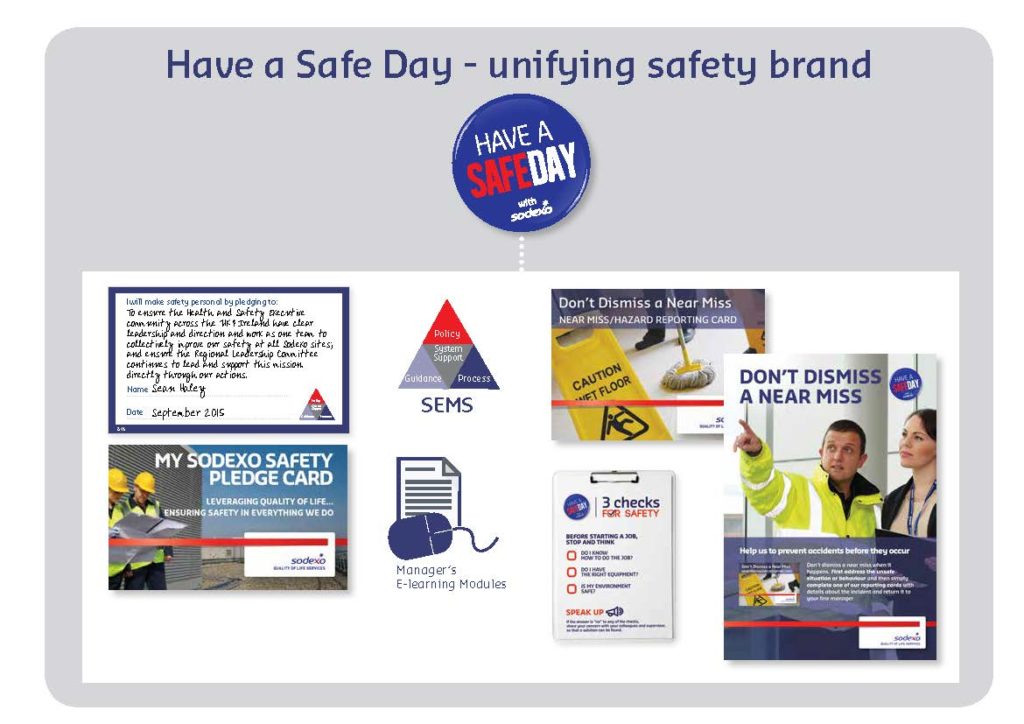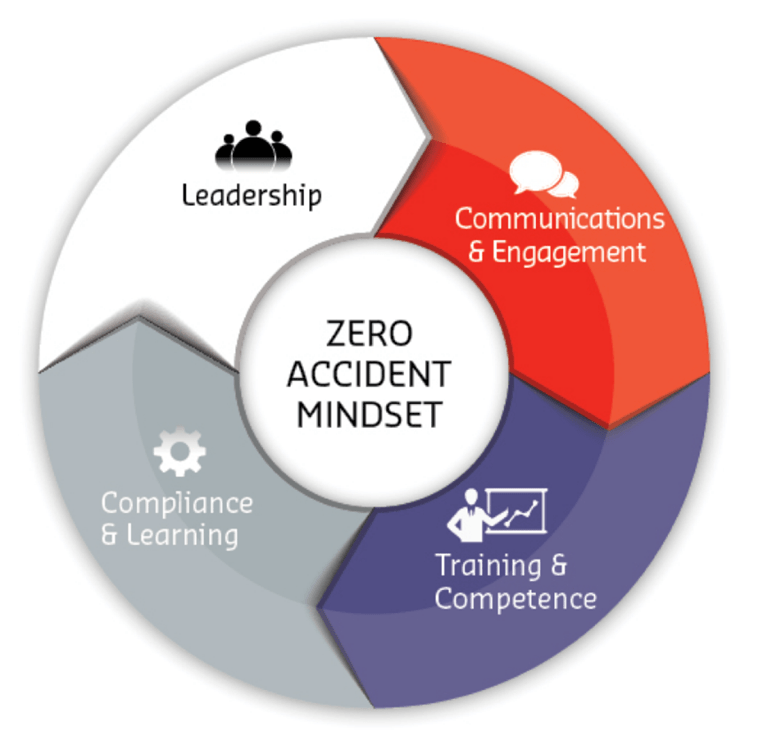We believe every accident is avoidable. And when it comes to safety, culture matters. Achieving a ‘Zero Accident’ mindset can only happen when proactive habits become second nature. Chris Dark explains.
 Sodexo employs some 427,000 employees delivering a wide range of quality of life services in 80 countries. In the UK and Ireland alone Sodexo employs 34,000 people the majority of which are delivering services such as catering, hospitality, cleaning, grounds maintenance; security; reception and technical maintenance at some 1,850 locations.
Sodexo employs some 427,000 employees delivering a wide range of quality of life services in 80 countries. In the UK and Ireland alone Sodexo employs 34,000 people the majority of which are delivering services such as catering, hospitality, cleaning, grounds maintenance; security; reception and technical maintenance at some 1,850 locations.
With such a large workforce delivering a wide range of services to some 100 million consumers every day for us it goes without saying that at the heart of our business is the health, safety and wellbeing of those we serve and of our employees.
The question is how does such a large organisation embed the importance of health and safety into its culture? Over recent years we have looked at leadership training, leadership behaviours and what it really means to have what we call a ‘zero accident mindset’ – which is our way of saying ‘safety culture’.
Understanding culture
 But what is culture? And why is it so important that we understand culture? The answer is simple; culture heavily influences an individual’s behaviour, at work, home or in a social environment, by setting group norms. Our behaviours have the potential to both cause or prevent something from happening including an accident.
But what is culture? And why is it so important that we understand culture? The answer is simple; culture heavily influences an individual’s behaviour, at work, home or in a social environment, by setting group norms. Our behaviours have the potential to both cause or prevent something from happening including an accident.
Workplace culture, is the collective grouping of the organisation to a particular way of thinking, working and acting in order to meet the company objectives; or just simply ‘The way we do things around here’.
Culture is learnt over time, through the outcome of a number of collective experiences from everyday actions which are reinforced through our beliefs about what is ‘right’ and what is ‘expected’.
Therefore a strong positive safety culture within an organisation makes the workplace a safer place.
The traditional view of changing culture is that it’s only effective when everyone in an organisation is involved, though this is not only unachievable but also inaccurate.
Culture change works one person at a time and is most effective when it spreads like a virus, step by step, gradually infecting everyone like the common cold. Effective change comes from individual actions which helps develop a positive safety culture this approach is more achievable.
Let’s look at three key action areas:
 Leadership
Leadership
Leadership plays a critical part in changing a business’s culture. Leader’s attitudes, behaviours, actions, interactions and examples will all be viewed as illustrations of their personal level of commitment to business culture. Every time leaders engage employees, they create experience. Often, their actions reinforce existing employee beliefs (positive or negative).
Identity (aka brand)
Moving the culture forward requires a transformational approach to leadership – one that influences, inspires, engages and challenges people around safety to create a social norm to safety.
At Sodexo we have a global health and safety strategy, two years ago we created ‘Have a safe day’ with its own logo which acts as a prompt to our employees to consider whether the task they are performing is safe for them, their customers and their colleagues.
Nudging our teams
For every safety awareness initiative we develop we believe the role of leadership has to be at the core, their role cannot be understated. To embed a safety culture in an organisation of any size needs the right tone to be set from the top, without it even the best safety campaigns are likely to fail.
And for our business we have two groups of leaders. The senior leadership team for the UK and Ireland, as well as the on-site leadership teams which are crucial in managing, influencing and creating the right culture among our employees who are actually delivering our services at all our client sites and offices.
Both groups heavily impact and influence how we not only operate as a business but also what is ‘right’ or expected which shapes our business culture and how we all behave. By providing our leadership groups with the right tools, knowledge and awareness is the first step in building and embedding a stronger safety culture.
If as a company we can influence and change daily habits we believe we can do better business and be safer. Have a safe day and the initiatives underneath it have been carefully developed to nudge our colleagues into making the right choices.
Our initiatives to improve our health and safety culture have included simple messages such as the three checks for safety, mandatory training and an exercise aimed at ensuring all employees have absolute clarity around their roles and responsibilities when it comes to health and safety.
Business-leading
At Sodexo we know that keeping people safe isn’t about just about preventing accidents, it also includes enabling our employees to confidently perform their job which in turn leads to greater productivity and employee engagement as well as better quality services provided for our customers and clients.
At the end of the day health and safety improves quality of life, which leads to happier employees and fewer sick days and accidents. If you put this into practice, you will deliver better services, become more productive and be of real value to your customers and clients.
Chris Dark is HSE Director at Sodexo UK & Ireland
The Safety Conversation Podcast: Listen now!
The Safety Conversation with SHP (previously the Safety and Health Podcast) aims to bring you the latest news, insights and legislation updates in the form of interviews, discussions and panel debates from leading figures within the profession.
Find us on Apple Podcasts, Spotify and Google Podcasts, subscribe and join the conversation today!




